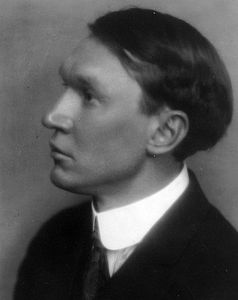Analysis of Drying Their Wings
Vachel Lindsay 1879 (Springfield) – 1931 (Springfield)
What the Carpenter Said
The moon's a cottage with a door.
Some folks can see it plain.
Look, you may catch a glint of light,
A sparkle through the pane,
Showing the place is brighter still
Within, though bright without.
There, at a cosy open fire
Strange babes are grouped about.
The children of the wind and tide--
The urchins of the sky,
Drying their wings from storms and things
So they again can fly.
| Scheme | X XAXAXBXBXCXC |
|---|---|
| Poetic Form | |
| Metre | 101001 01010101 111111 11110111 010101 10011101 011101 110101010 111101 01010101 010101 10111101 110111 |
| Closest metre | Iambic tetrameter |
| Characters | 411 |
| Words | 77 |
| Sentences | 6 |
| Stanzas | 2 |
| Stanza Lengths | 1, 12 |
| Lines Amount | 13 |
| Letters per line (avg) | 24 |
| Words per line (avg) | 6 |
| Letters per stanza (avg) | 158 |
| Words per stanza (avg) | 38 |
Font size:
Submitted on May 13, 2011
Modified on March 05, 2023
- 23 sec read
- 366 Views
Citation
Use the citation below to add this poem analysis to your bibliography:
Style:MLAChicagoAPA
"Drying Their Wings" Poetry.com. STANDS4 LLC, 2024. Web. 30 Apr. 2024. <https://www.poetry.com/poem-analysis/37276/drying-their-wings>.


Discuss this Vachel Lindsay poem analysis with the community:
Report Comment
We're doing our best to make sure our content is useful, accurate and safe.
If by any chance you spot an inappropriate comment while navigating through our website please use this form to let us know, and we'll take care of it shortly.
Attachment
You need to be logged in to favorite.
Log In